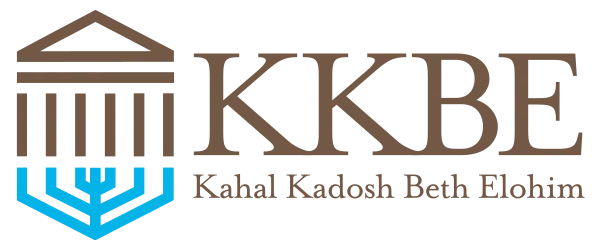HISTORY
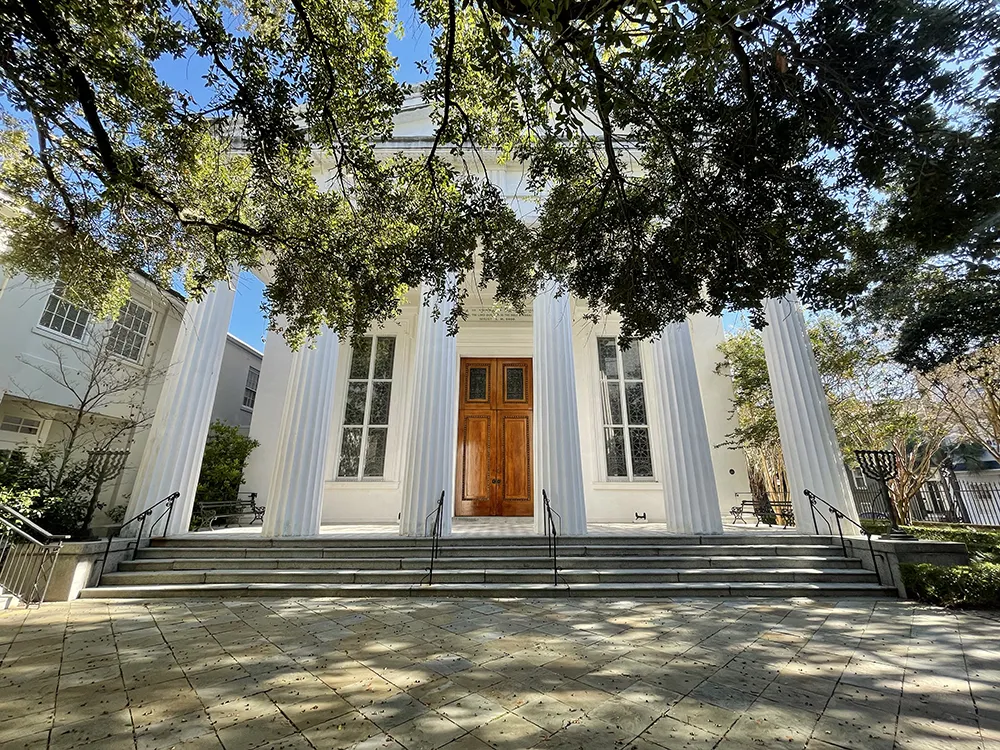
The history of Kahal Kadosh Beth Elohim (Holy Congregation House of God) is a heritage in which all American Jews can take pride. It is a story of faith, devotion, and perseverance in the American tradition of freedom of worship.
Charleston was founded in 1670, and the earliest known reference to a Jew in the English settlement is in a description dated 1695. Soon thereafter other Jews followed, attracted by the civil and religious liberty of South Carolina and the ample economic opportunity of the colony. These pioneers were sufficiently numerous by 1749 to organize the present congregation, Kahal Kadosh Beth Elohim , and fifteen years later, to establish the now historic Coming Street Cemetery, the oldest surviving Jewish burial ground in the South.
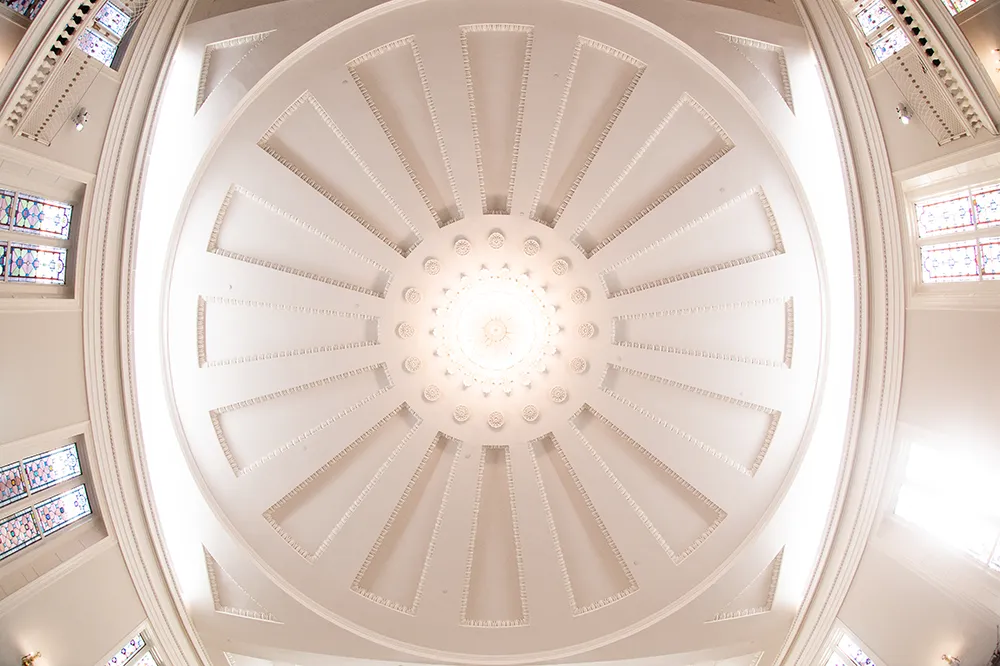
KKBE is the second oldest synagogue building in the United States and the oldest in continuous use. It was designated a National Historic Landmark in 1980 and has received awards for Historic Preservation and Historic Restoration.
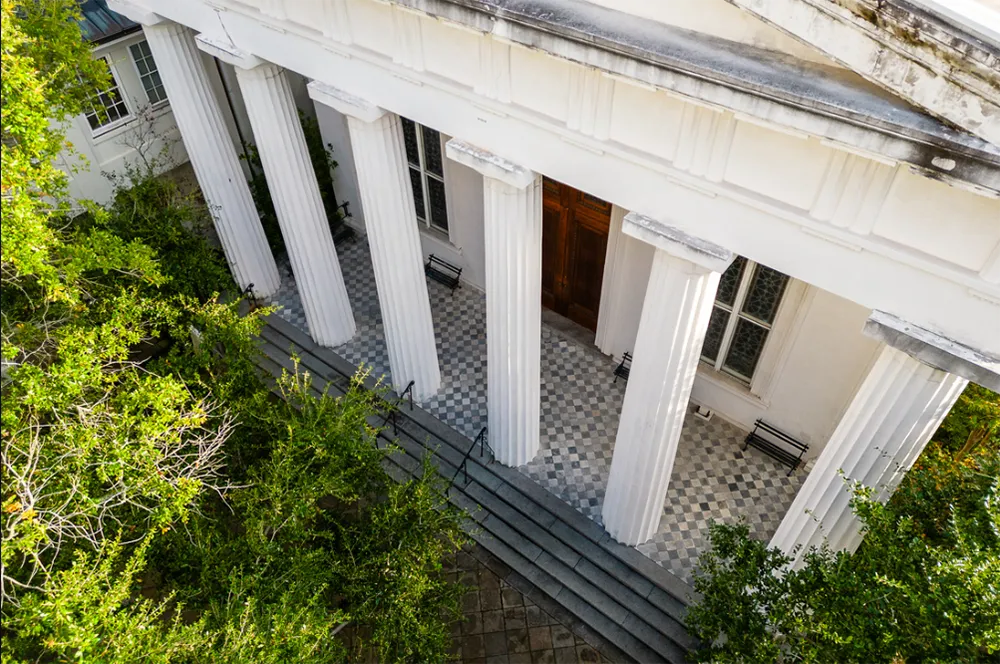
Birthplace of Reform Judaism
Leadership
For almost two and a half centuries members of KKBE have been eminent leaders in the city, state and country. Among notable early congregants were Moses Lindo, who before the Revolution helped to develop the cultivation of Indigo (then South Carolina’s second crop), and Joseph Levy, veteran of the Cherokee Wars of 1760-61 and probably the first Jewish military officer in America. Almost two dozen men of Beth Elohim served in the War of Independence, among them the brilliant young Francis Salvador, who as delegate to the South Carolina Provincial Congresses of 1775 and 1776, was the first Jew to serve in an American legislature. Killed shortly after the signing of the Declaration of Independence, Salvador was also the first Jew known to die in the Revolutionary War. To learn more about Francis Salvador, who was inducted into the South Carolina Hall of Fame in 2024, click HERE.
Members of the congregation founded Charleston’s Hebrew Benevolent Society in 1784, the nation’s oldest Jewish charitable organization, and in 1801 established the Hebrew Orphan Society, also the country’s oldest Jewish orphan society (both still functioning today). In 1838, the second oldest Jewish religious school in the United States was organized by members of the congregation, Sally Lopez and Penina Moise.
Other congregants pioneered in steamship navigation, introduced illuminating gas to Charleston, and numbered four of the eleven founders of the Supreme Council of Scottish Rite Masonry.
In 1790, President George Washington responded to a letter of congratulations to him by members of KKBE, by writing: “The affectionate expressions of your address again excite my gratitude, and receive my warmest acknowledgment. May the same temporal and eternal blessing which you implore for me, rest upon your Congregation.” A replica of this letter can be viewed in the KKBE Museum.
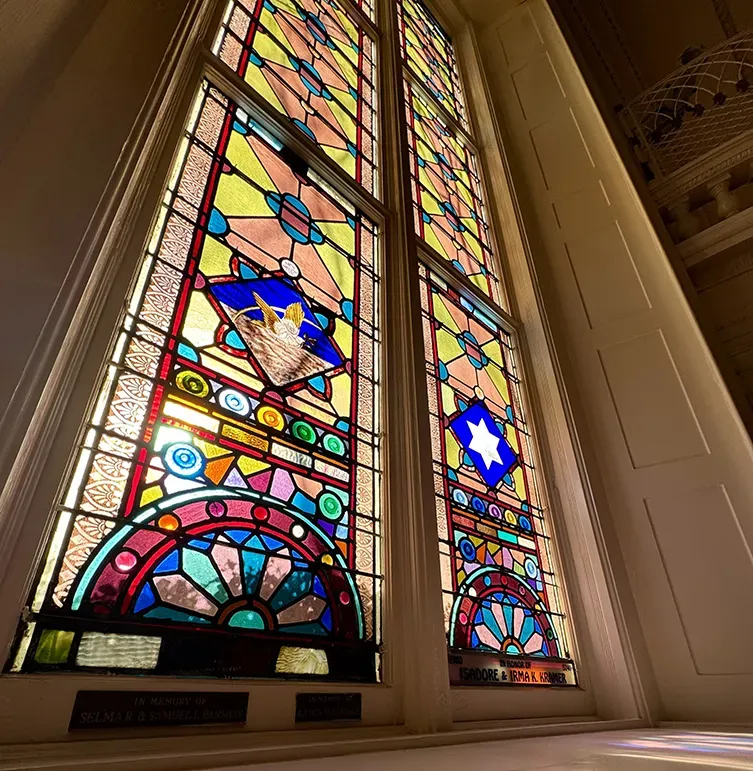
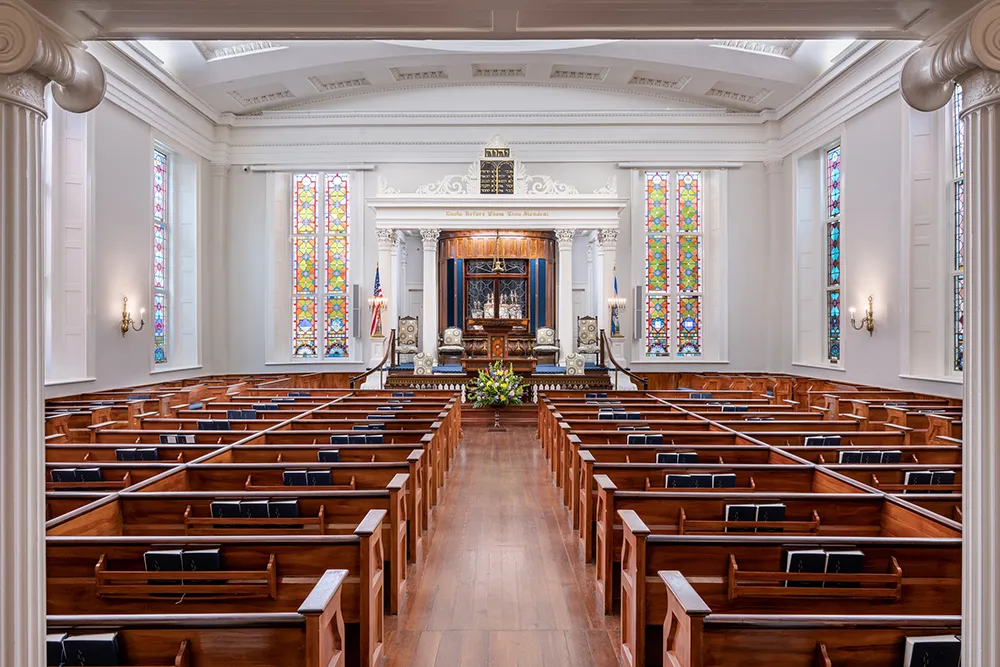
The Synagogue
This outstanding Greek Revival style building was constructed in 1840 by member David Lopez, along with at least two enslaved artisans, both trained carpenters, named Kit and George. The design was created by architects Tappan and Noble and work plans by C. L. Warner. It replaces a 1794 cupolated Georgian style structure destroyed by fire in 1838. In 1819, a wood fence to the south of the synagogue was replaced with the wrought iron and masonry one that graces Hasell Street today. Also surviving are the bases of two menorahs (candelabras) on either side of the Bimah. The large marble tablet above the huge entrance doors proclaims the Shema in Hebrew and an unusual English translation: “Hear O Israel the Lord Our God is the sole Eternal Being.” In the foyer over the entrance to the sanctuary is the original dedication stone from the 1794 synagogue. Our controversial organ was installed when the current building was erected in 1840, and remains in use to this day. Housing our four Torah scrolls is the massive hand-carved ark made of Santo Domingo mahogany. The stained-glass windows, which show Jewish religious symbols, date from 1888 and are replacements of windows destroyed in the earthquake of 1886. The interior of the synagogue, originally following a traditional Sephardic Orthodox arrangement, was altered first in 1879 with the installation of family pews and the removal of the pulpit to the front of the sanctuary. Then, in 1886, after the earthquake, balconies on both sides of the building were removed and the Bimah reconfigured.
In 2003, the Congregation received the prestigious Carolopolis Award for exterior preservation. In 2019, KKBE embarked on a complete restoration of its sanctuary, resulting in the receipt in 2020 of the congregation’s second Carolopolis Award for interior restoration.
